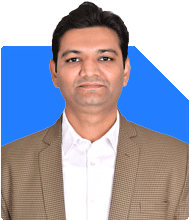Retiring in 5 Months: Will Rs. 1 Lakh Last 25 Years with 7% Inflation?
Ramalingam Kalirajan |8325 Answers |Ask -Follow
Mutual Funds, Financial Planning Expert - Answered on Oct 04, 2024
He has an MBA in finance from the University of Madras and is a certified financial planner.
He is the director and chief financial planner at Holistic Investment, a Chennai-based firm that offers financial planning and wealth management advice.... more
.jpg)
I am going to retire by five months from autonomous local government office.My pension case under consideration by law. For example,my monthly expenses now Rs 375/- and total corpus arround Rs.100,000.Then what will be my financial planning to serve my expenses for next 25 years assuming inflation @7% per year.
Understanding Your Retirement Expenses
At present, your monthly expenses are Rs 375, which is relatively low. However, over time, inflation will erode the purchasing power of this amount. At 7% inflation per year, your expenses will double every 10 years.
This means in 10 years, your monthly expenses will not remain Rs 375. They will increase to approximately Rs 750, and after 20 years, it will rise further. Planning for inflation is vital to ensure that you have enough money to meet your needs in the future.
Analyzing Your Current Corpus
You have a corpus of Rs 1,00,000. While this is a good start, it might not be sufficient to cover your expenses over 25 years, especially given the effect of inflation. This corpus needs to grow, and it must generate enough returns to keep up with inflation.
Let’s consider ways to optimize and grow this amount.
Investment Strategy to Protect and Grow Your Wealth
Equity Mutual Funds for Growth
To beat inflation, equity mutual funds can be a good option. Over the long term, equity investments have the potential to offer higher returns than fixed income instruments, especially in an inflationary environment.
Actively managed mutual funds can outperform passive index funds because professional fund managers can adjust the portfolio according to market conditions. This makes them a better choice for maximizing your corpus growth over time.
Maintaining a Balanced Portfolio
A balanced portfolio with a mix of equity and debt can provide both growth and stability. While equity mutual funds offer growth potential, debt funds provide safety and moderate returns.
Having a portion of your money in debt funds can reduce overall portfolio risk while still providing some returns to protect against inflation.
Avoiding Investment-Based Insurance Policies
If you currently have LIC policies or any other insurance-based investment products, consider whether they are providing adequate returns. Insurance policies, such as ULIPs, often have high costs and lower returns compared to mutual funds.
It is better to shift towards pure insurance for protection and mutual funds for wealth creation. This way, you can maximize the returns on your investment.
Public Provident Fund (PPF) for Stability
The PPF is another stable option that offers tax-free returns and helps in wealth preservation. However, keep in mind that the PPF’s returns may not always beat inflation, but they do offer a safe, long-term option for a part of your portfolio.
If you do not already have a PPF, you can consider starting one to balance out the riskier equity investments.
Managing Healthcare Costs in Retirement
Healthcare is one of the most significant expenses in retirement. As you age, medical costs increase, and inflation affects healthcare more severely than general inflation.
It’s important to have a comprehensive health insurance policy that covers potential medical expenses. This will ensure that you don’t have to dip into your savings for healthcare costs, preserving your corpus for other living expenses.
Tax Implications on Your Investments
Understanding the tax implications of your investments is crucial to maximizing your returns.
For equity mutual funds, long-term capital gains (LTCG) above Rs 1.25 lakh are taxed at 12.5%.
Short-term capital gains (STCG) on equity funds are taxed at 20%.
For debt mutual funds, LTCG and STCG are taxed according to your income tax slab.
A tax-efficient withdrawal strategy will help you retain more of your gains over the years. You should consult a certified financial planner to create a tax-efficient investment plan.
Emergency Fund for Unexpected Expenses
It’s important to set aside some of your corpus for an emergency fund. This fund can cover any unexpected expenses, such as medical emergencies or sudden repairs, without disrupting your regular financial plan.
An emergency fund should be kept in liquid, safe investments such as a savings account or short-term fixed deposits. Having quick access to this money will provide peace of mind and financial security.
Withdrawal Strategy for 25 Years
Over the next 25 years, you will need a sustainable withdrawal strategy that ensures you don’t run out of money. Your corpus must generate enough returns to cover your living expenses while growing to match inflation.
A systematic withdrawal plan (SWP) from mutual funds can provide you with a steady monthly income. This option allows you to withdraw a fixed amount every month, while the remaining balance continues to grow in the market.
This strategy offers you a predictable cash flow and ensures that your money is working for you, rather than just sitting idle.
Avoiding Real Estate as an Investment
While real estate is often considered a popular investment, it may not be the best option for generating regular income in retirement. Real estate investments require high upfront costs, and they may not be easily liquidated when you need cash.
Additionally, real estate returns may not always beat inflation, and maintenance costs can further erode the returns. Therefore, it’s better to focus on financial instruments that provide liquidity and consistent returns, like mutual funds and fixed income instruments.
Creating Additional Income Streams
If possible, you can consider creating additional income streams in retirement.
This can be in the form of part-time work, consultancy, or passive income from dividend-yielding mutual funds. These income streams will reduce the pressure on your corpus and provide more flexibility in your financial plan.
Reevaluating Your Plan Regularly
Your financial situation and goals can change over time, especially as you enter different stages of retirement.
It is important to review your financial plan at least once a year. A certified financial planner can help you rebalance your portfolio, adjust your withdrawal rate, and ensure that your retirement corpus is still on track to meet your needs.
Finally
Retiring with a modest corpus of Rs 1,00,000 is challenging, especially when inflation is considered. However, with careful planning and disciplined investing, you can make the most of your available resources.
By focusing on equity mutual funds, creating a balanced portfolio, and maintaining a tax-efficient strategy, you can grow your corpus and sustain your living expenses over the next 25 years.
Don’t forget to plan for healthcare, build an emergency fund, and regularly revisit your financial plan to adjust for any changes.
With the right strategy in place, your retirement can be financially secure and comfortable.
Best Regards,
K. Ramalingam, MBA, CFP,
Chief Financial Planner,
www.holisticinvestment.in
https://www.youtube.com/@HolisticInvestment
You may like to see similar questions and answers below
Ramalingam Kalirajan |8325 Answers |Ask -Follow
Mutual Funds, Financial Planning Expert - Answered on May 29, 2024
Ramalingam Kalirajan |8325 Answers |Ask -Follow
Mutual Funds, Financial Planning Expert - Answered on May 30, 2024
Ramalingam Kalirajan |8325 Answers |Ask -Follow
Mutual Funds, Financial Planning Expert - Answered on Jul 14, 2024
Ramalingam Kalirajan |8325 Answers |Ask -Follow
Mutual Funds, Financial Planning Expert - Answered on Apr 05, 2025
Dr Dipankar Dutta |1215 Answers |Ask -Follow
Tech Careers and Skill Development Expert - Answered on May 08, 2025
Dr Dipankar Dutta |1215 Answers |Ask -Follow
Tech Careers and Skill Development Expert - Answered on May 08, 2025
Dr Dipankar Dutta |1215 Answers |Ask -Follow
Tech Careers and Skill Development Expert - Answered on May 08, 2025
Dr Dipankar Dutta |1215 Answers |Ask -Follow
Tech Careers and Skill Development Expert - Answered on May 08, 2025
Dr Dipankar Dutta |1215 Answers |Ask -Follow
Tech Careers and Skill Development Expert - Answered on May 08, 2025
Dr Dipankar Dutta |1215 Answers |Ask -Follow
Tech Careers and Skill Development Expert - Answered on May 08, 2025
Dr Dipankar Dutta |1215 Answers |Ask -Follow
Tech Careers and Skill Development Expert - Answered on May 08, 2025
Dr Nagarajan J S K |377 Answers |Ask -Follow
NEET, Medical, Pharmacy Careers - Answered on May 08, 2025
Dr Nagarajan J S K |377 Answers |Ask -Follow
NEET, Medical, Pharmacy Careers - Answered on May 08, 2025
Vipul Bhavsar |69 Answers |Ask -Follow
Tax Expert - Answered on May 08, 2025






















